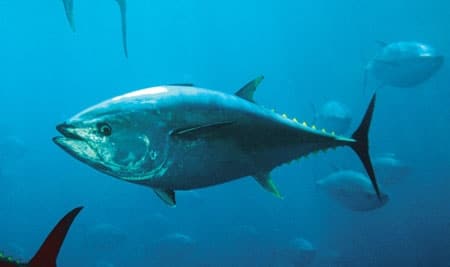
THREE-PEAT: Scientists tracked a blufin that swam the Pacific three times in 600 days.
Photo: Stammphoto.com
Scientists with the census of Marine Life, a 73-nation network of researchers, recently disclosed breakthroughs in understanding the migration patterns of many Pacific species, including salmon, sharks and bluefin tuna. How did they do it? They tagged fish with high-tech implants that emit signals and allow scientists to track movements with satellite or seabed listening posts (the Big Brother of marine conservation, so to speak). The findings include:
One bluefin tuna that swam the Pacific Ocean three times in 600 days—just your everyday 24,850-mile commute.
AdvertisementA “dead zone”—a complete absence of large marine animals—located at the epicenter of the 2004 tsunami off Sumatra in the Indian Ocean.
Data about 2,700 salmon that were implanted with tiny electronic chips and tracked via seabed stations to learn more about the fish after they leave the rivers where they were spawned. “Until now salmon have just vanished into the big black box of the ocean,” lead scientist David Welch told reporters. For more information, visit www.coml.org.









